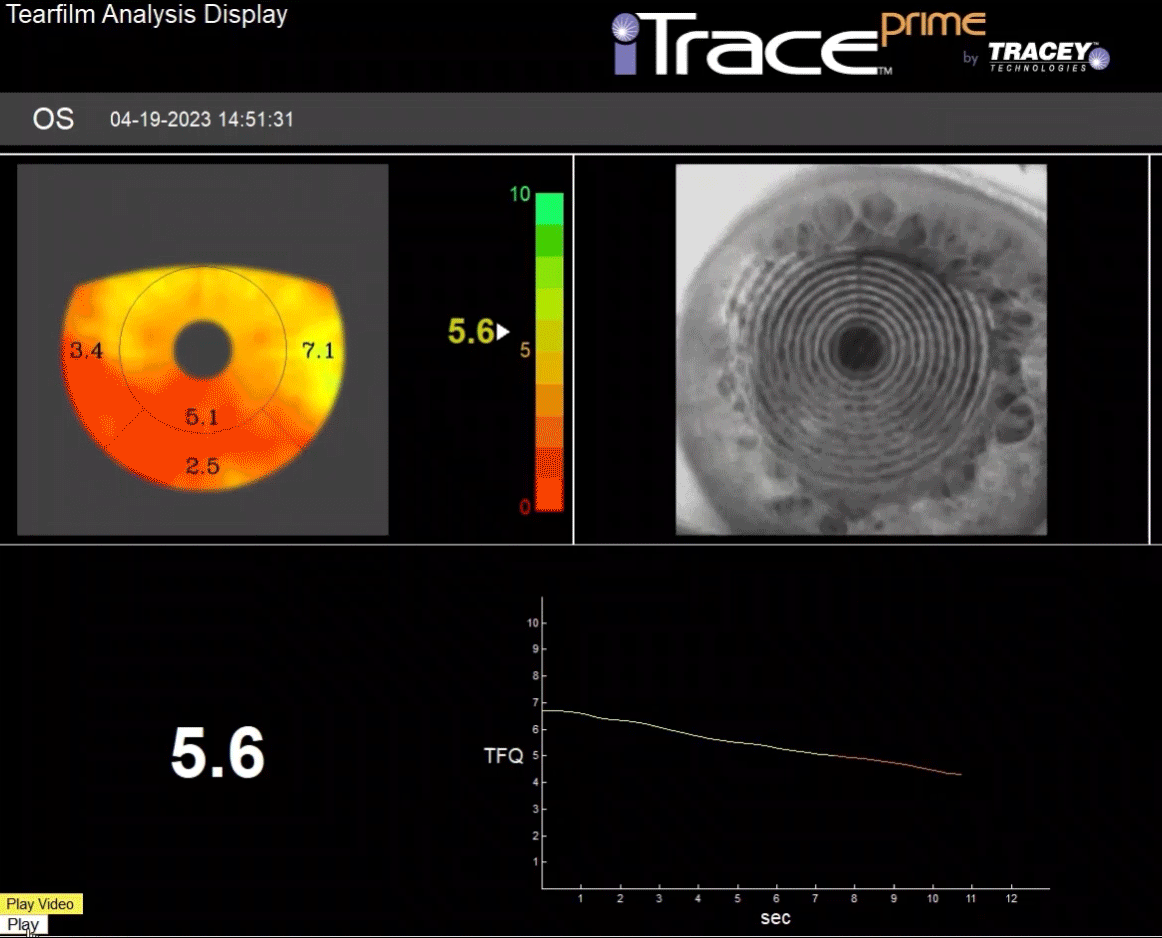INTRODUCING THE TEAR FILM INDEX (TFI™)
Available with the iTrace Prime software, the Tear Film Analysis is a new exam process that continues to expand the data that iTrace users get from a single device.
An upgraded camera enables the iTrace to provide both subjective and objective data that eyecare practitioners can use to take the guesswork out of the assessment of the ocular surface and tear film during the exam and treatment planning.
Using the Placido-disk technology powered by the iTrace’s integrated corneal topographer, the new Tear Film Analysis exam visualizes the breakup of the tear film overtime on the eye’s surface immediately after a blink. It quantifies the degree to which dry eye and tear film dysfunction affect the corneal surface using a new objective scale — the Tear Film Index (TFI).
HOW DOES TEAR FILM ANALYSIS WORK?

Tear film quality has been a confounding factor in cataract and refractive surgery outcomes for decades, and the growth of a highly specialized array of IOL options has made this even more apparent.
In the Tear Film Analysis exam, the iTrace’s high-definition camera records the patient’s corneal surface for a 12-second period starting immediately after a blink, producing a map of the tear film deterioration and allowing users to visualize the areas where the tear film evaporates and where it stabilizes.
The tear film is analyzed using a proprietary assessment of the sharpness, shape, and continuity of the Placido-ring images and quantified using the Tear Film Index (TFI). The analysis also provides a metric called the Topo-Breakup Time (Topo-BUT). This is the time at which the topography ring reflection edges begin to break down, corresponding with tear film break up.
TEAR FILM INDEX (TFI™)
The Tear Film Index (TFI), like the other indices on the iTrace, standardizes the effects of dry eye and ocular surface conditions on a patient’s quality of vision.
The TFI is recorded on an objective 0-10 scale that provides doctors with a simple, intuitive number to quantify both tear film quality and the impact of dry eye disease (DED) on the patient’s vision. This metric is trackable over time, allowing you to discuss DED treatment options before the condition worsens and threatens to affect surgical outcomes. Then, you can track the treatment's effectiveness.
The TFI is one of the many measurements available in iTrace Prime’s new all-in-one surgical, display: the Prime Dashboard.
